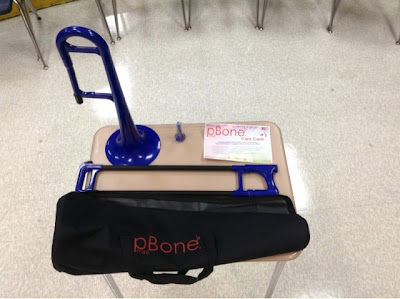Teacher: Brandt Schneider
|
Date:
|
Grade: 9-12
|
School: Seymour High School
|
Content area: Music
|
SLO Focus Statement
What will you teach in the SLO? What is the expectation for student improvement related to school improvement goals?
|
SLO Statement: Students in music class will show improvement in their sight-reading skills.
Rationale: Reading fluency is an essential skill for music class performance. The more fluent students are the faster paced we can be as a class. We can introduce much more music if students are readers.
Previous data from benchmark exams indicates music reading is a low performing skill for students at SHS.
|
Baseline – Trend Data
What data were reviewed for this SLO? How does the data support the SLO?
|
During the 2012-13 school year all band and choir students were tested in sight-reading as part of their semester exam. In choir average and median scores from this assessment were below proficient with a median score of 28 on the CMEA assessment. In band average and median scores were below proficient as well.
Data for the past six years of group repertoire is archived. In general, Band has been performing at a Level 1-2 and Choir at Level 2-3.
CMEA audition scores are also stored. In 2010, two students were selected for All-State. No students have been selected for All-State since then. No students auditioned for All-State last year.
|
Student Population
Who are you going to include in this objective? Why is this target group/student selected?
|
This SLO will include all of my band and choir students. These students are fairly typical of students on our school. Choir and band are 9-12th grade. As of 9/1/2013 there are 13 members of the band and 47 members of the choir.
Nearly all of these students perform below grade level standard of Level 4 on the NYSSMA scale.
|
Standards and Learning Content
What are the standards connected to the learning content?
|
1. Content Standard: Singing, alone and with others, a varied repertoire of music
Students (Choir)
a. sing with expression and technical accuracy a large and varied repertoire of vocal literature with a level of difficulty of 4, on a scale of 1 to 6, including some songs performed from memory
b. sing music written in four parts, with and without accompaniment
c. demonstrate well-developed ensemble skills
2. Content Standard: Performing on instruments, alone and with others, a varied repertoire of music
Students (Band)
a. perform with expression and technical accuracy a large and varied repertoire of instrumental literature with a level of difficulty of 4, on a scale of 1 to 6
b. perform an appropriate part in an ensemble, demonstrating well-developed ensemble skills
c. perform in small ensembles with one student on a part
5. Content Standard: Reading and notating music
Students who participate in a choral or instrumental ensemble or class
a. demonstrate the ability to read an instrumental or vocal score of up to four staves by describing how the elements of music are used
b. sightread, accurately and expressively, music with a level of difficulty of 3, on a scale of 1 to 6
|
Interval of Instruction
What is the time period that instruction for the learning content will occur?
|
The SLO will begin on September 30, 2013 and continue until May 30, 2014.
|
Assessments
How will you measure the outcome of your SLO?
|
Our curriculum benchmark state standard is that high school students will be able to sightread one level below their performance level. Our curriculum standard is that students will be able to perform at Level 4 and sightread at a Level 3.
An additional complication is that students are in band/choir for multiple years. It is important to have a consistent, valid assessment to compare data. We have invested in several sources of sight-reading materials and practice tools.
Even though most of the class tests below grade level we feel it is important to test them at grade level.
1. All students will be formally assessed in sight-reading with a 8-12 measure sight-reading assessment at Level 3. This assessment will occur six times per year. We will use the CMEA Audition Rubric for this assessment.
2. Brief sight-reading assignments will be posted and tracked in Smartmusic. These assessments are sequential and will be reinforced during class. There will be 2-3 assessments per marking period.
3. Group Performance. Band/choir is a performance based class where the end product is a group assessment. Our concerts and rehearsals are assessments. Compositions and the levels of performance will be tracked.
|
Indicators of Academic Growth and Development (IAGDs)/Growth Targets
What are the quantitative targets that will demonstrate achievement of the SLO?
|
1. Choir:
2. Band:
3. CMEA Auditions
4. Repertoire
|
Instructional Strategies
What methods will you use to accomplish this SLO? How will progress be monitored? What professional learning/supports do you need to achieve this SLO?
|
Sight-reading will be part of each rehearsal. Teacher will model sight-reading and coach. Sight-reading is part of the choir textbook (Essential Musicianship). In addition, sight-reading will be part of regular Smartmusic homework and assessment.
SmartMusic tracks and records each assessment for easy comparison and tracking. While it archives recordings it does not track data from year to year.
Finding a simple reporting mechanism for tracking this data is a professional learning support I could use. In addition, the band is a small sample size so data may be unreliable.
|



